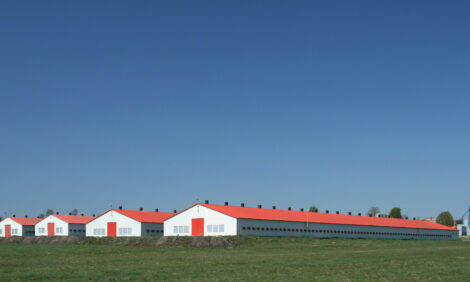



Profitability through Efficiency
UK - Every day there is another public outcry about food, whether it is mislabelled, fraud, unhealthy or just a source of deadly bacteria, writes Murray Hyden, Director of Biosecurity at Anpario plc, United Kingdom.The industry has to be vigilant all the times and this can lead to significant profit improvements when managed correctly. Probably one of the easiest ways to demonstrate vigilance is with biosecurity but if this is simply the visible trappings of biosecurity rather than the principle factors then it is incomplete and for incomplete read ineffective.
Foot dips and vehicle sprays, signposts to keep out visitors are the visible signs but what about feed quality, feed bin hygiene, water line biofilm, drinking water quality, gut health? These are the neglected areas that prove vital in our battle to maintain customer confidence and thereby profit. The horsemeat scandal has increased sales of vegetarian dishes, why? Perhaps the poultry industry has not publicised its efforts to ensure quality products well enough.
Feed is the obvious candidate as a source of infection but it represents a small proportion of what the bird consumes. Treating feed with potent chemicals at the feedmill is great for producing “clean” feed at the mill gate but what about the birds. Pelleting at adequate temperatures will effectively decontaminate feed more efficiently than chemical addition so that means any additives must survive pelleting and then be fully effective during cooling, loading, transport transfer, and feeding.
So much the better if it has an effect in the bird.
Volatile products like aldehydes are driven off during pelleting, which is just as well as they are not permitted as feed additives for poultry. Liquid acids are neutralised by minerals, especially in layer and breeder feeds. Acid salts have no net contribution to the gut being a perfect balance of acid and alkali.
Breeders
Controlled release acidifiers like Salgard protect the feed from the point of manufacture through to ingestion by the bird. In the gut the acid and the carrier combination help create optimum intestinal conditions by providing more acidic conditions that reduce the colonisation risk from pathogens. This is also important as it reduces the risk of faecal contamination of the eggs to the hatchery. Salgard is formulated to a physiological pH that promotes the growth of the acidophilic commensal microflora that provide natural protection as well as synthesising vitamins, digesting complex sugars and celluloses possibly supplying as much as 10% of the energy acquired from food. In fact Salgard has been found to have a positive energy value to the bird that far exceeds the calorific value of the product.
Broilers
Broilers grow much faster today than they did 10 years ago and have a much higher feed intake. This high volume feeding creates more pressure on the acid secretion capability in the bird to prevent pathogens from the feed and the environment passing through the crop and proventriculus into the small intestine. Optivite has developed Optimax to elevate acid levels in the feed and in the foregut to provide the vital gastric barrier to prevent pathogen colonisation of the intestine.
Layers
Layers like breeders require long term protection from pathogens but seldom have such intense biosecurity measures as breeders simply because of the scale of the operation.
Rations for layers also contain high levels of calcium that makes it much more difficult for the bird to control intestinal pH and the result is often an intestinal pH that favours some potential pathogens. This was where the original Salmonella scare started.
Salgard provides an acid source to help overcome the buffering of the calcium salts and helps optimise gut conditions for improved nutrient absorption. Used in conjunction with an Omega 3 product like Optimega, the effect can be further enhanced as the omega-3 oils can improve the efficiency with which the acids can penetrate the bacterial cell walls to kill them.
Water
 |
 |
The often forgotten nutrient yet as mentioned this is ingested in higher quantities than feed. In times of disease and stress sometimes water will be taken rather than feed. However water lines are often coated with a biofilm of slime moulds and bacteria that provide sugars necessary for pathogen establishment in drinker systems. Salgard liquid is the ideal partner to the acid feed additive range and kills biofilm swiftly. Adding to waterlines at the end of the crop and soaking overnight will kill and dislodge biofilm to be washed out leaving lines pathogen free.
Credence is an easy to use tablet based a easy to dose drinking water treatment for all drinker systems. This is especially useful when the header tanks are not readily accessible as simple concentrates can be prepared and administered automatically using a Dosatron type dosing system. Safe for all animals including humans Credence is the perfect partner for biosecurity.
If the header tanks are readily accessible then another option is the Flogenic system where a single applicator is fitted directly to the ball valve and will accurately dose up to 90,000 litres per unit.
Biosecurity need not be difficult or time consuming it just needs to be thought through and if you need some advice then call us.








